Have you ever wondered how law enforcement agencies are embracing the swift advancements in technology? A key development in this arena is the adoption of drone technology. Drones are far more than just aerial cameras; they are evolving into vital instruments for public safety.
In this article, we'll explore the diverse applications of police drones and their game-changing impact on law enforcement strategies across the United States. We'll explore how these drones operate in search and rescue missions, crowd management, and, notably, their increasing role in de-escalation tactics. A key focus will be on drones as first responders and how these unmanned aerial vehicles serve as crucial tools for de-escalation. Join us as we uncover the diverse and pivotal roles drones play in advancing police work.
Drones: A Technological Leap in Law Enforcement
Drones, or unmanned aircraft systems, are a fusion of technology, engineering, and innovation. These unmanned aerial vehicles (UAVs) have transcended their initial roles, emerging as pivotal tools in law enforcement. From enhancing aerial photography to revolutionizing agriculture, drones have now found a significant role in policing.
Across the United States, police departments are increasingly harnessing the power of drones. In cities like Baltimore, Maryland, and Chula Vista, California, drones such as the DJI Mavic 3 Thermal and DJI Matrice 30 are transforming from high-tech gadgets into essential elements of law enforcement. They offer an unmatched perspective, crucial for heightened situational awareness in complex operations.

Enhancing Public Safety & Operational Efficiency
These aerial devices are redefining public safety. Law enforcement agencies are leveraging drones for diverse applications, ranging from overseeing expansive crime scenes to bolstering tactical operations. Drones provide a strategic vantage point, aiding in critical decision-making and enhancing officer and public safety.
In scenarios where direct intervention could escalate risks, drones serve as invaluable tools for assessment and monitoring, aligning with de-escalation strategies aimed at diffusing tense situations safely. Their rapid deployment capabilities are especially crucial in search and rescue missions, often reaching challenging areas quicker than ground teams or manned aircraft.
The Federal Aviation Administration (FAA) plays a crucial role in this integration, setting regulations to ensure drone usage aligns with national airspace safety and privacy standards. These guidelines are essential in balancing innovative drone use with ethical considerations around monitoring.
As various police departments across the country continue to adopt drone technology, a significant shift in law enforcement approaches is unfolding. Drones are not just enhancing operational capabilities but are also setting new benchmarks in public safety and tactical response. As this technology evolves, its role in law enforcement is set to grow, heralding a new era of smarter, safer, and more efficient policing.
The Role of Drones in Modern Policing
In today's policing landscape, drones are not just tools; they're game-changers. The FAA plays a crucial role in this evolution, setting forth regulations that ensure the safe and responsible use of drones. These guidelines are pivotal for law enforcement agencies as they navigate the balance between leveraging aerial monitoring capabilities and upholding privacy and safety standards.
Regulations & Guidelines
Navigating the skies isn't without rules. The FAA's regulations are designed to integrate drones into national airspace safely while respecting privacy concerns. Law enforcement agencies must adhere to these guidelines, which govern everything from flight altitude limits to no-fly zones, ensuring a responsible approach to drone use.
Applications in Law Enforcement
The versatility of police drones is indeed remarkable. They're not just about capturing aerial views of sprawling crime scenes; they're about transforming how law enforcement operates. In cities like Chula Vista, drones have become indispensable in tactical operations. They provide real-time aerial monitoring, crucial in large-scale public events or complex police operations. This aerial advantage extends the reach of law enforcement, offering perspectives that were once unattainable without the use of manned aircraft.
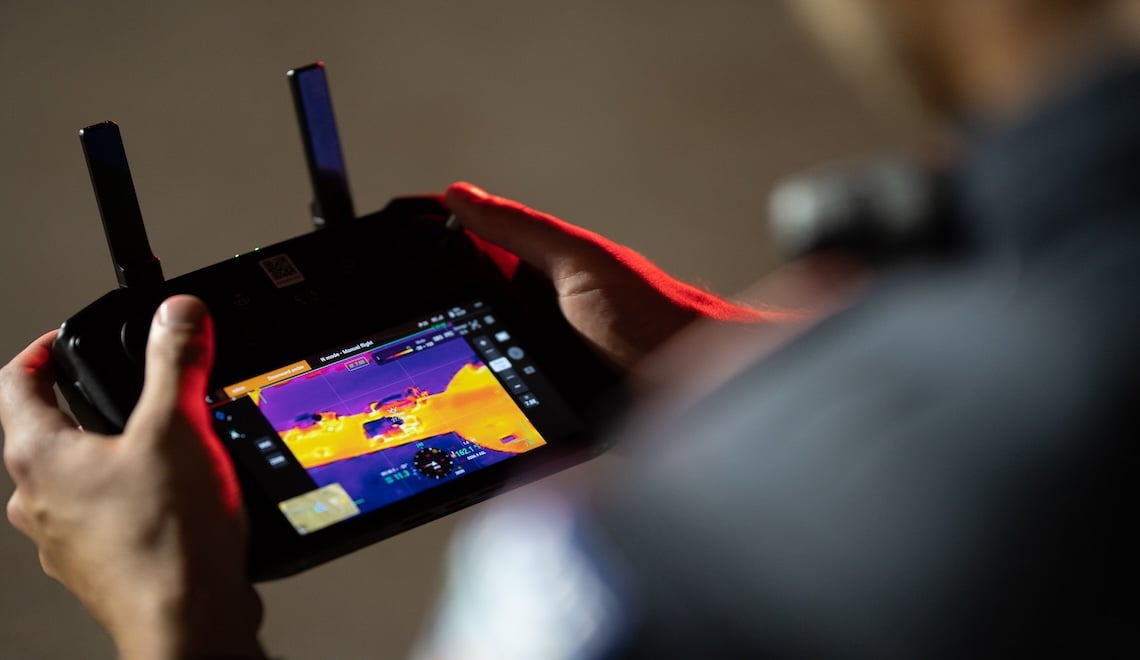
1. Drones as First Responders: Revolutionizing Crisis Management
In high-stress scenarios where immediate, direct intervention could amplify risks, drones are emerging as critical first responders. This innovative approach places drones at the forefront of crisis management, allowing them to swiftly arrive at a scene before ground teams. As aerial first responders, drones provide law enforcement with essential real-time visual data, enabling them to assess situations from a safe distance. This immediate aerial perspective is invaluable, especially in emergencies like natural disasters or accidents, where every second is crucial. Drones can quickly survey hard-to-reach areas, providing a visual overview that is vital for strategizing rescue efforts and ensuring the safety of both the public and response teams.
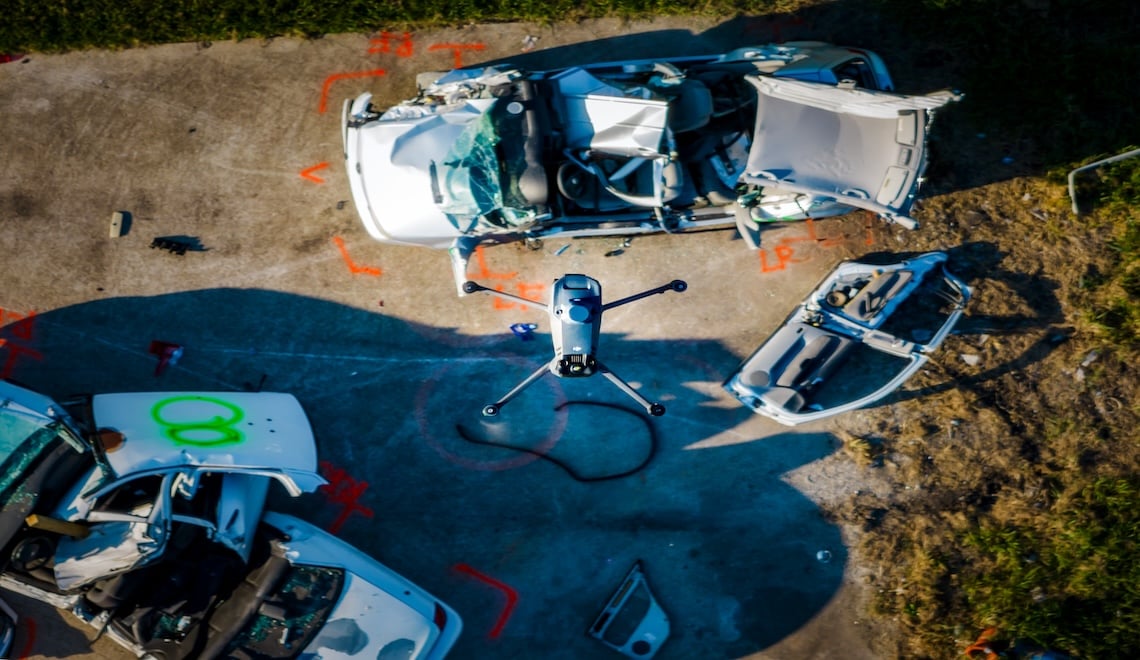
2. Drones as Tools for De-escalation: Enhancing Public Safety
In the realm of de-escalation, drones are becoming indispensable tools in modern policing. Their ability to monitor situations from above offers a non-intrusive yet effective method for managing potentially volatile scenarios. By deploying drones, law enforcement can gain a comprehensive view of a situation without the immediate physical presence of officers, which might otherwise escalate tensions.
This approach is particularly beneficial in sensitive situations where the objective is to defuse tensions safely and maintain public order. The use of drones in these contexts not only protects the public but also minimizes risks for police officers, making it a strategic addition to conventional law enforcement tactics.
Moreover, drones are increasingly used in search and rescue operations, where time is of the essence. DJI drones such as the Matrice 30T and Mavic 3T can swiftly cover large areas, aiding in locating missing persons or assessing disaster zones. This rapid response capability is invaluable, often making a difference in life-saving situations.
Behind the Scenes: The Technology of Police Drones
Police drones are not just flying cameras; they're sophisticated eyes in the sky, equipped with an array of advanced technologies. These UAVs often come fitted with thermal imaging, high-resolution cameras, and night vision capabilities. This suite of technology enables them to operate effectively under various conditions, be it the dead of night or the bright light of day. The imagery these drones provide is extremely clear and detailed enough to be crucial in tactical decision-making.
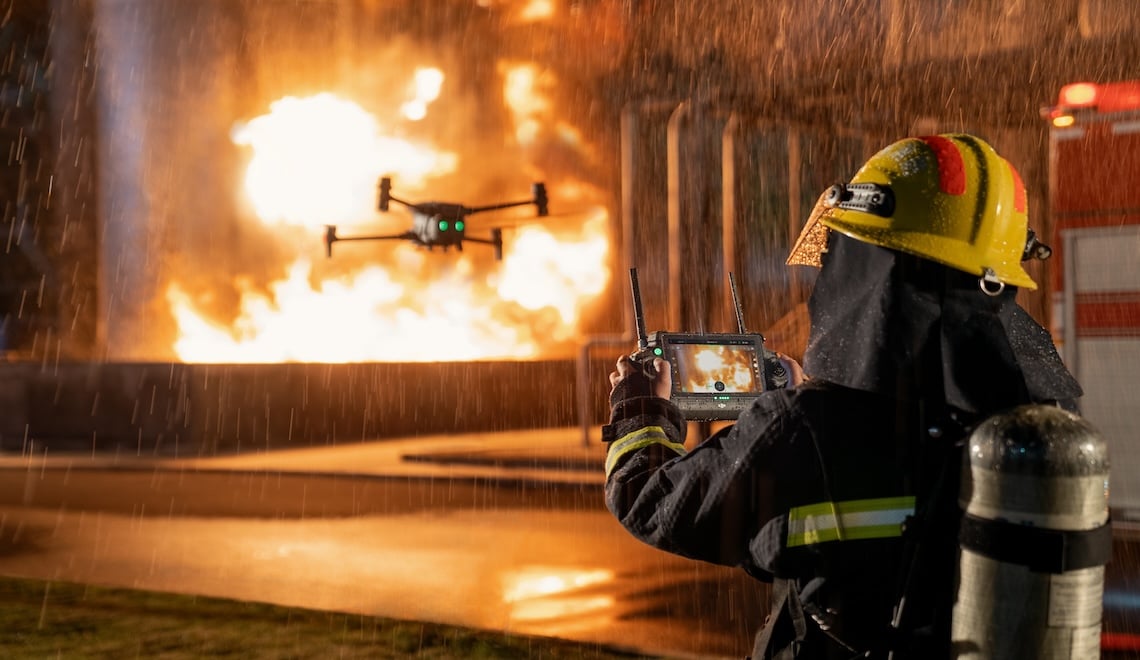
Capabilities & Limitations
One might wonder, how long can these high-tech sentinels stay airborne? The answer varies with the model. For instance, drones like the DJI Matrice 30T are known for their endurance and are capable of extended flight times that allow them to cover substantial areas. This endurance is particularly beneficial in operations that require sustained monitoring over a large region.
The night vision capabilities of these drones are a game-changer for law enforcement agencies. They allow for continuous operations, ensuring that the cover of darkness does not impede maintaining public safety. This 24/7 operational ability is crucial in scenarios like search and rescue missions, where every moment counts, or in monitoring operations, where night-time activities must be monitored.
Expanding the Scope of Operations
Beyond flight duration and night vision, police drones are also equipped with features like zoom lenses for detailed visual monitoring from a safe distance. Some models can even carry additional payloads, such as loudspeakers for public announcements or less-lethal tools for crowd control.
Integrating drones into law enforcement is not just about adding a tool to the arsenal; it's about enhancing the capabilities of police officers. Drones provide a level of situational awareness that was previously unattainable, allowing for more informed decision-making and strategic planning.
Furthermore, the technology powering police drones is constantly advancing, expanding the scope of what is achievable in law enforcement operations. With these technological advancements, new opportunities arise to bolster public safety, optimize operational efficiency, and empower law enforcement agencies to tackle contemporary policing challenges.
Matching the Mission: Selecting the Ideal Drone for Law Enforcement
In law enforcement, choosing the appropriate drone is a tactical decision. Each model and make, from the nimble DJI Mavic Enterprise Series to the robust DJI Matrice Series, brings its unique strengths to the table. The decision hinges on the specific requirements of the mission at hand.
Agility Meets Efficiency: DJI Mavic Enterprise Series
The DJI Mavic Enterprise Series stands out for operations that demand speed and agility. These drones are known for their compact design, making them perfect for quick deployment, especially in densely populated urban environments. Their ability to maneuver in tight spaces makes them ideal for situations where a rapid response is crucial, such as following a suspect or inspecting a potentially hazardous scene.
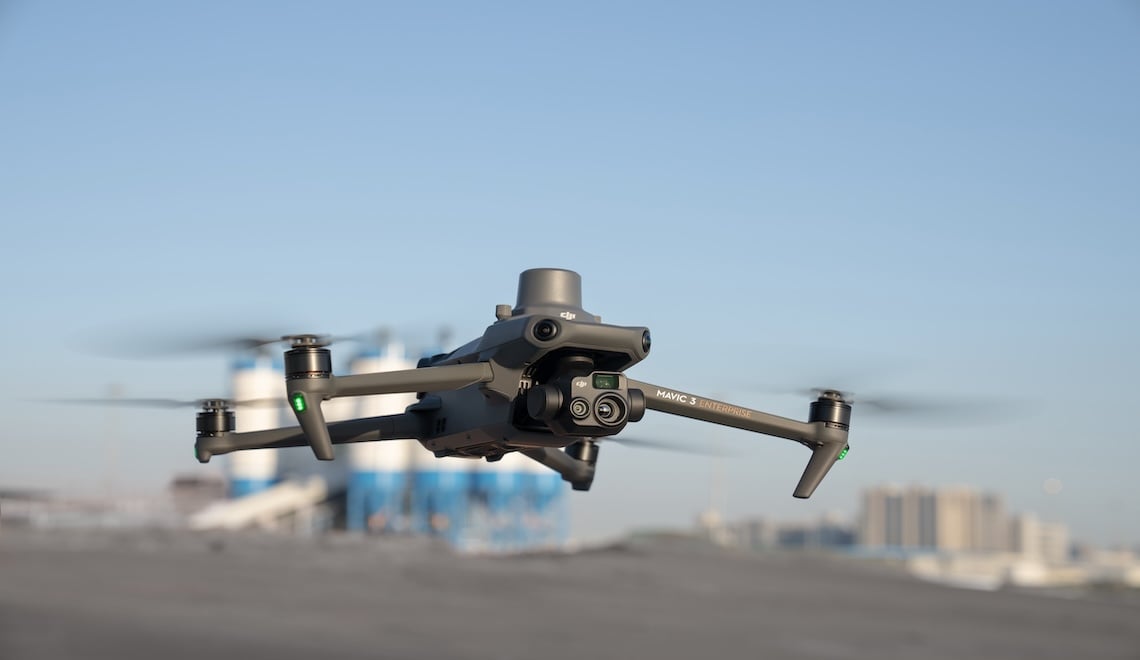
Robustness & Advanced Imaging: DJI Matrice Series
On the other end of the spectrum, the DJI Matrice Series is celebrated for its robustness and advanced imaging capabilities. These drones are tailored for missions requiring detailed monitoring over expansive areas. Equipped with high-resolution cameras and advanced sensors, the Matrice drones excel in providing comprehensive aerial views, essential for large-scale operations like monitoring wildfires or overseeing large public events.
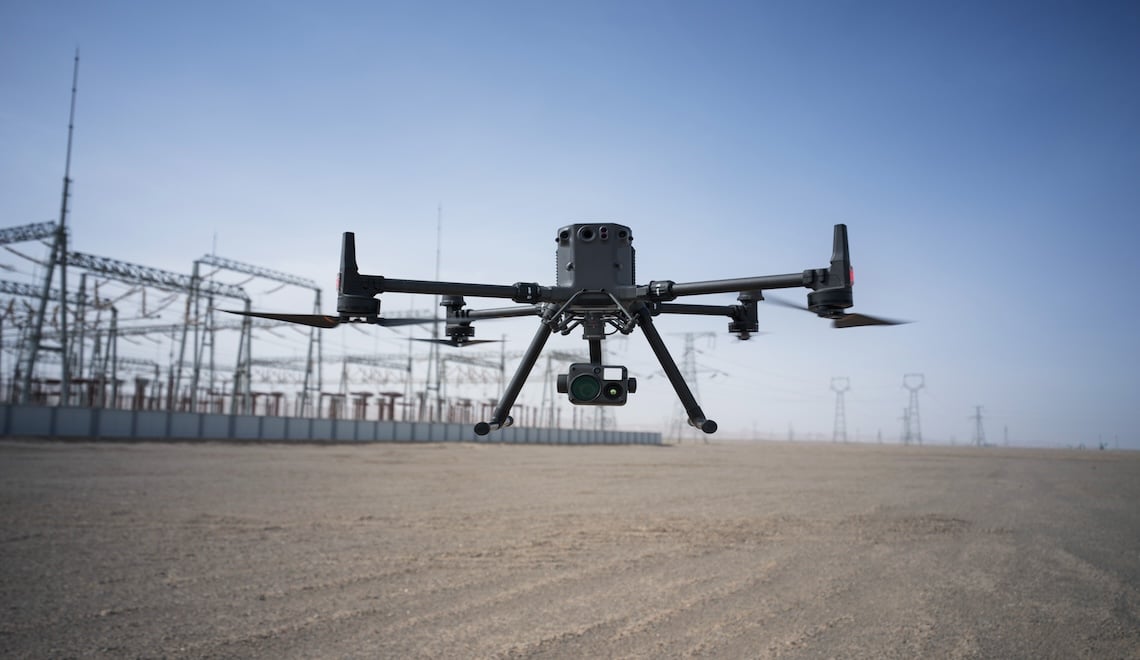
Looking Ahead: Drones & the Future of Policing
The rise of drone technology in law enforcement is reshaping the policing landscape as unmanned aircraft systems are becoming integral to maintaining public safety. Their role in enhancing efficiency as first responders, ensuring officer safety, and providing tactical advantages is undeniable. But perhaps one of their most crucial contributions is in the realm of de-escalation.
By offering a bird's-eye view and real-time data, drones are helping to diffuse tense situations from a safe distance. This not only protects the public but also reduces the risks officers face on the ground. The journey of integrating drones into policing practices is still in its early stages, but the potential is immense.
Dive deeper into this subject by downloading our comprehensive eBook on drones in law enforcement here. This resource offers a wealth of information and insights, perfect for anyone looking to expand their understanding of how drones are shaping the future of policing.
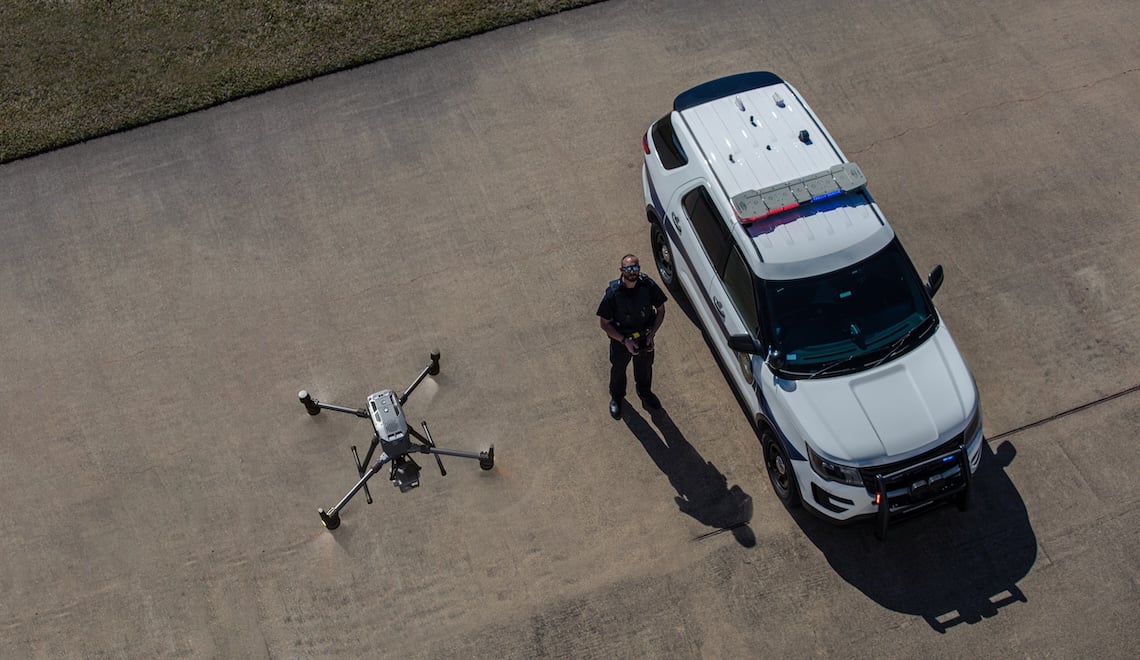



.png?width=300&name=FH2%20update%20(1).png)
-1.png?width=300&name=HS%20-%20Featured%20Images%20(3)-1.png)
